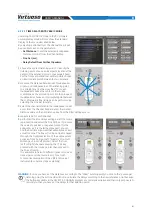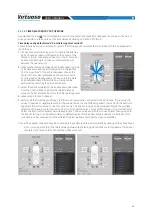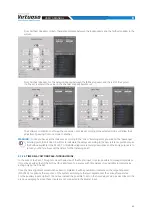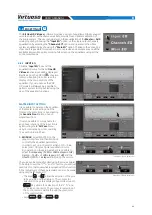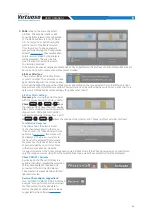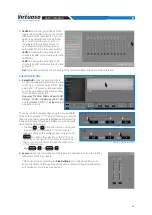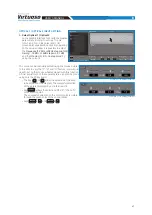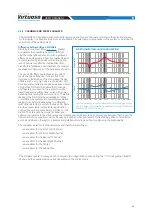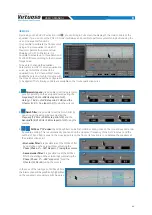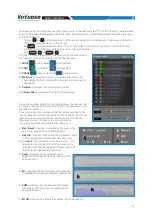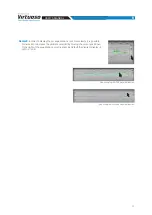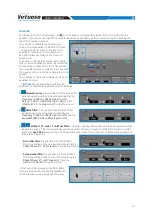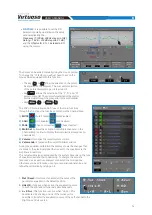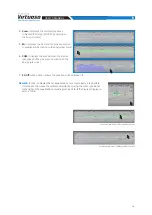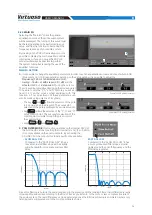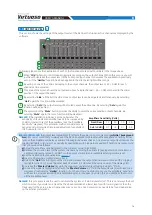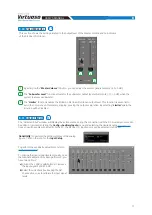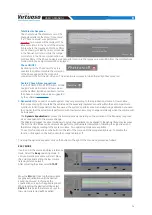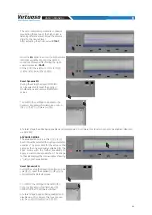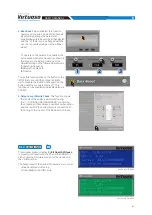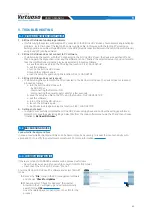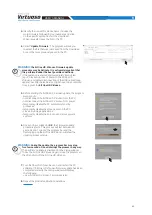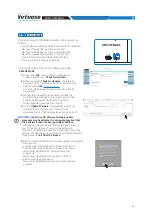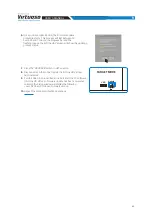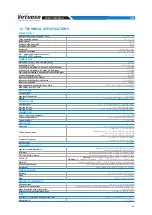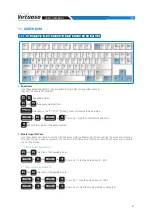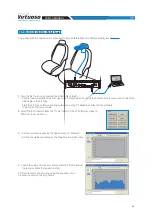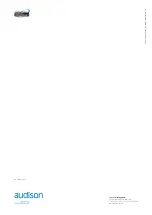
75
USER'S MANUAL
Selecting the "Main EQ" check the general
equalization curve of the entire audio system
will be displayed. The tuning of this curve must
be the last operation to be performed in your
setup, and has the function to best adapt the
frequency response of your audio system.
By clicking on the POP UP activation icon, it is
possible to display the main equalizer controls
in full screen. If you do not use the POP UP
mode it will always be possible to perform
the system tuning but reducing the use of the
equalizer functions.
8.8.3
MAIN EQ
MAIN EQ. SETTING
A.
It is possible to change the equalizer parameters, in order to set an equalization curve via 6 Poles, of which 5 FiR
(blue pole) and 1 IIR (green pole).By operating on the setup window it is possible to adjust the
Frequency (f: 20 Hz ÷20KHz step min 1HZ),
Gain (g: -15 dB ÷ +15dB step min 0.1 dB)
and the
Q factor (Q: 0.1÷ 16 step min 0.1)
using the cursors.
Example of IIR pole adjustment
Example of FIR pole adjustment
The curve can be manually edited using the mouse pointer.
To be able to vary the "F" G" and "Q" factors, you will just
need to act on the mouse wheel equipped with this
function. A finer adjustment of these parameters can
also be made using only the PC keyboard.
-
The keys
and
: allow the selection of the pole
to be adjusted on the diagram. The successful
selection of the pole is displayed by a circle around it.
-
Key
: allows the selection of the “F”,”G” and “Q”
poles control point. The successful selection of the
control point is visible through the green color of
the control slider.
-
Keys
+
and
+ .
B.
PCM FILTER MODE:
this function operates on the internal DACS of
the bit One HD Virtuoso (setting them internally ½ Fs); (Fs = 96KHz).
It is only available on the analog outputs. By activating the
AD LINK / AC Link outputs this function will not be available.
- SLOW ROLL OFF
Compared to the "FAST ROLL OFF" it has a
less accentuated filter slope with a slightly
wider bandwidth, more ripple and less filter
delay.
- FAST ROLL OFF
Compared to the “SLOW ROLL OFF” it has
a more pronounced filter slope, a smaller
ripple around the cut-off frequency, and the
filter delay is greater.
−120
−100
−80
−60
−40
−20
0
Frequency
Amplitude (dB)
19 kHz
48 kHz
57.6 kHz
67.2 kHz
76.8 kHz
86.4 kHz
96 kHz
19 kHz
48 kHz
57.6 kHz
67.2 kHz
76.8 kHz
86.4 kHz
96 kHz
−120
−100
−80
−60
−40
−20
0
Frequency
Amplitude (dB)
−120
−100
−80
−60
−40
−20
0
Frequency
Amplitude (dB)
19 kHz
48 kHz
57.6 kHz
67.2 kHz
76.8 kHz
86.4 kHz
96 kHz
19 kHz
48 kHz
57.6 kHz
67.2 kHz
76.8 kHz
86.4 kHz
96 kHz
−120
−100
−80
−60
−40
−20
0
Frequency
Amplitude (dB)
Since this filtering is outside the audio range and in the presence of other analog filters, their difference is really
imperceptible and varies according to the kind of tracks you listen to, or the more or less complex structure of
the audio system. The real differences can be appreciated once the Bit One HD setup is completed, where only
listening tests will give reason to the most appropriate choice.
A
B
8

